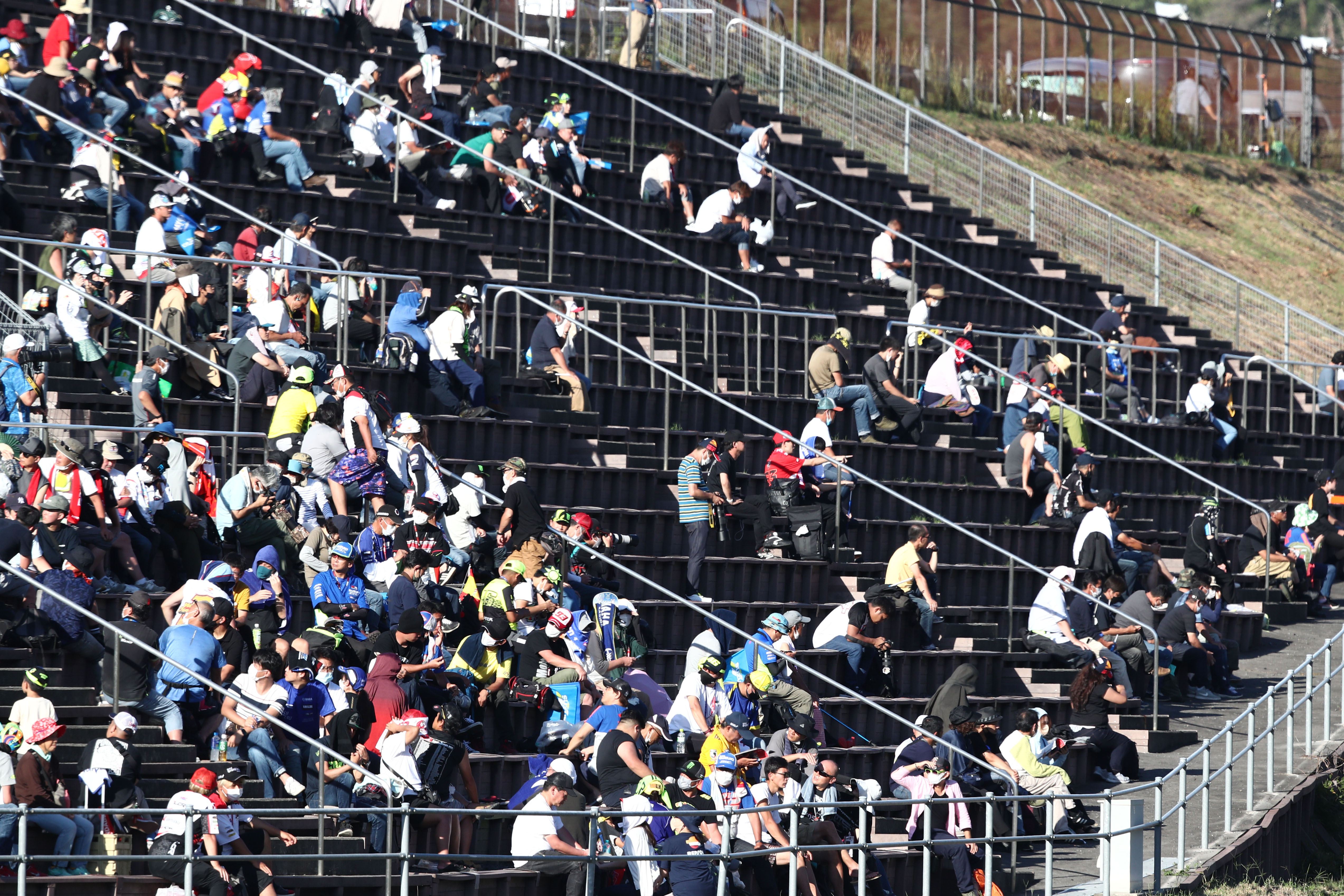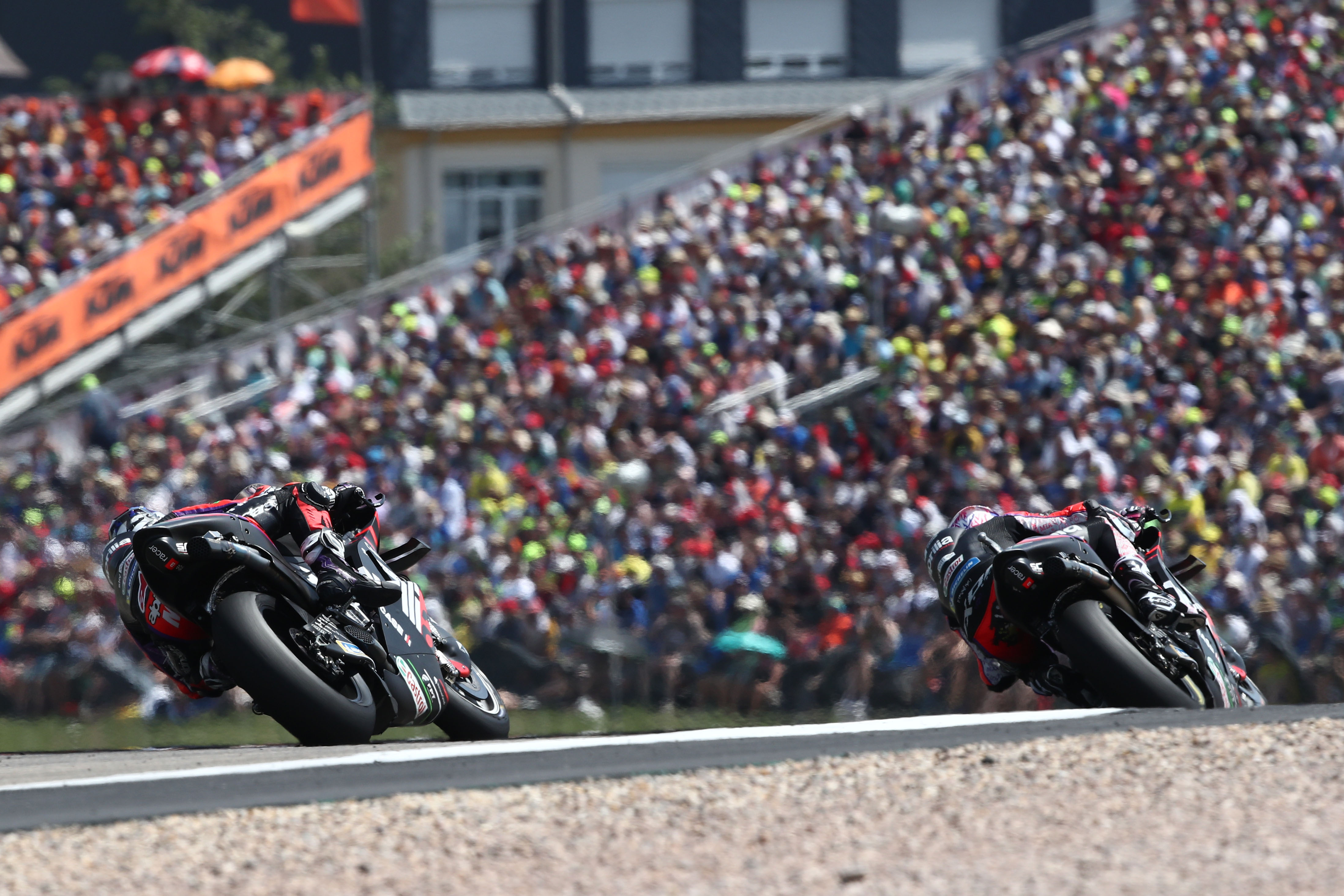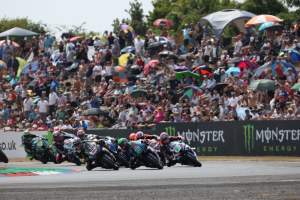With COVID-19 restrictions now by and large a thing of the past and with events once again able to return to their heyday, 2022 should in theory have been a bumper year for MotoGP as fans rushed back to see their heroes in action for the first time since 2019.
Yet, with crowd figures worryingly low at some venues, should attendance numbers signal red flags to series bosses Dorna?
Well, as always, that’s a loaded question – and while there are certainly worries ahead for MotoGP given the disaster that was 2022 among some of its previously most loyal fanbases, there are also signs of how to fix the problem in some of the year’s other successes.

Overall, the 2022 season featured a slightly diminished spectator attendance compared to 2019, the past pre-pandemic season with full attendance. Now the calendar has expanded from 19 races to 20 with the addition of Portugal’s Portimao circuit, overall attendance was down nearly 10%, with an average of 121,000 people attending each of the series’ events.
However, that number isn’t an honest one, considering the extremes at each end of the scale. Motegi, with Japan still under COVID restrictions, had 57,000, while the always poorly attended Qatari race had only 17,000 turn up – less of an issue at a venue where the hosting fee doesn’t need to be made back by the state-owned venue.
But there were other significant outliers, too. The two Italian races, at Misano and Mugello, had only 101,140 and 74,078 spectators respectively, while on the Iberian peninsula only 75,900 turned up in Portimao and 86,803 at Aragon.
On the other side of the spectrum, though, some venues were able to cram in record numbers. The French Grand Prix at Le Mans had 225,000 and the Sachsenring topped the tables with a whopping 232,202 – nearly double the average attendance. Other venues also managed solid numbers too, with Termas de Rio Hondo, Valencia and Buriram more than 50,000 over the average.
So what went so wrong for some of the most historic and scenic venues on the calendar? In a nutshell, it seems that there are two factors that it can be attributed to: indolence and greed on behalf of not MotoGP organiser Dorna but the individual promoters, who, if they want to protect their ever-more coveted spaces on the calendar, need to start looking at what others are doing.
Ticket prices in Italy in particular were almost outrageously expensive, even without the context of the continent entering a cost of living crisis. It was more than double the likes of Le Mans for a general admission pass and considerably more if you wanted a grandstand seat, and it seems that many were simply priced out of attending.
That in part isn’t entirely about cost, mind you; it’s about value for money. For years, the Italian races in particular have relied upon one factor to help them sell out – Valentino Rossi. Devoid of that in 2022, and coming after bumper crowds in 2021 to see him off as he retired, it seems that many fans simply couldn’t justify paying for expensive tickets to not see the seven-time MotoGP champion.

And that’s where those races need to be learning from the lessons of some of the calendar’s more successful races. It’s no surprise that Sachsenring is top of the attendance list, simply because the value for money on offer is exceptional.
More than just a race weekend, the organiser manages to cram a music festival, excellent food and beverage options, a theme park and plenty more into a full weekend of activity. It’s not unreasonable to think that a considerable number of the attendees might not know the names of many on the grid – but if the party is enough to draw them in, then you’ve got a chance of getting them addicted, and that’s good for the sport.
The same party atmosphere also applies to the likes of Assen and Le Mans, for which success in selling out tickets long predates the latter’s local hero Fabio Quartararo’s 2021 world title. Others such as Silverstone have cottoned on, too, trying to replicate the formula – but the results haven’t arrived just yet.
Right now, it looks like some of the most iconic venues on the calendar are destined to either fall off or become loss leaders if Dorna and local governments are interested in propping up struggling attendance figures. But the good news is that it doesn’t necessarily have to be that way – if the model of others is followed.
It’s something that should be aided further in 2023 by the addition of sprint races at every single round of the 21-race season. While it’s not something particularly beloved among the teams and riders and something seen as a knee-jerk move that doesn’t address MotoGP’s biggest issues, one place where it will have a benefit should be in crowd attendance.
And, with talk of circuit bosses becoming increasingly cooperative going forward (with rumours of proposed unionisation even being floated lately), it’s not quite as doom and gloom as some of 2022’s headlines perhaps suggested.





